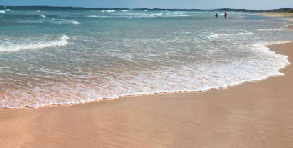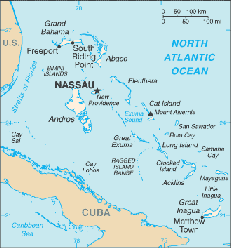



Caribbean Rental Ltd
The Caribbean's Premier Renting Portal




With 700 islands sprinkled out over 100,000 sq miles of ocean, The Bahamas offers the largest assortment of vacation spots of any tropical destination.
The Bahamas
The archipelago extends over 500 miles of the clearest water in the world. The 700 islands, including uninhabited cays and large rocks, total an estimated land area of 5,382 sq miles, and register a highest land elevation of 206 ft.
Geography played a crucial role in Bahamian history. In 1492, Christopher Columbus made his first landfall in the New World on the island of San Salvador in the eastern Bahamas. After observing the shallow sea around the islands, he said "baja mar" (shallow water or sea), and effectively named the area The Bahamas, or The Islands of the Shallow Sea.
Since it was located close to Florida and well-travelled shipping channels, The Islands Of The Bahamas caught the attention of explorers, settlers, invaders and traders. These people shaped the colourful history of The Bahamas and made the country what it is today.
There are 14 major islands or island groups: Nassau/Paradise Island, Grand Bahama, and “The Out Islands”: The Abacos, Acklins/Crooked Island, Andros,The Berry Islands, Bimini, Cat Island, Harbour Island, The Exumas, Inagua, Long Island, Mayaguana, and San Salvador.
Each island has its own diversity that continues beyond geography, carrying through to the heart of The Bahamas, the Bahamian people.
With so much diversity, on any day, any moment, on any island in The Bahamas, there is only one thing for you to do. And that is, to choose. Choose from hundreds of beaches, pink or white, secluded or brimming with activities. Choose from the towns and the villages, the old and the new. Casinos, golfing, shopping or exploring? Ecotours or family fun?
The choice, and the experience that comes with it, is all yours.
Information and photograph courtesy of the Official Tourism Website of the Islands of The Bahamas. For more detail on the islands, that’s a great place to start.

Map of The Bahamas
